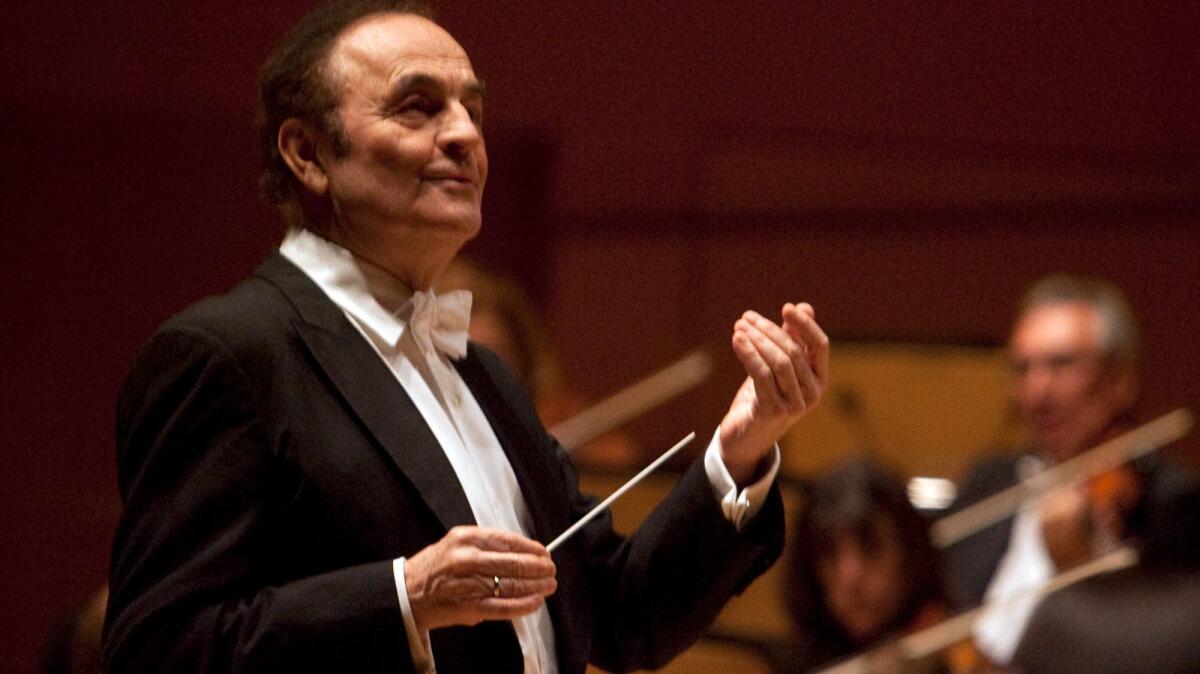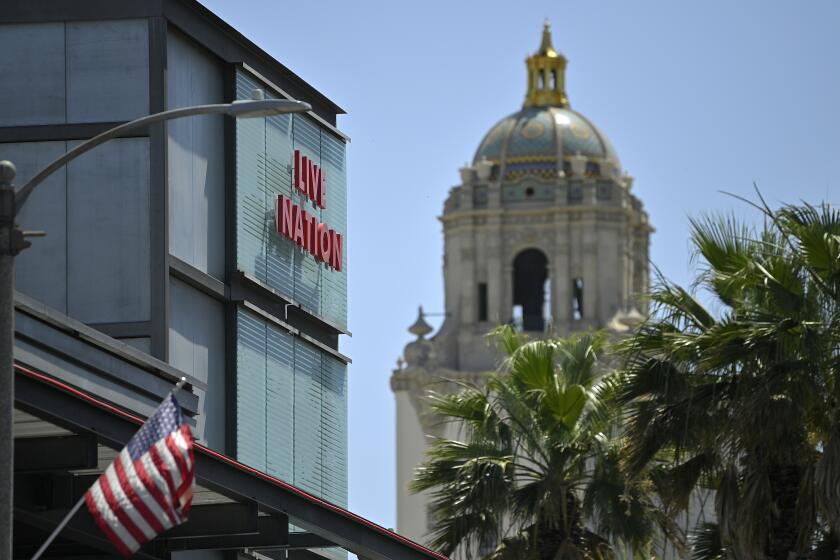Review: Charles Dutoit and L.A. Phil dig deep into the Ravel archive

- Share via
The Los Angeles Philharmonic raised a few staid eyebrows around the orchestral world this fall with a streak of four out of five weeks of subscription concerts conducted by women. It wasn’t deliberately planned that way, former L.A. Phil President Deborah Borda said; that’s just how it worked out due to the availability of the artists.
This was the week of the outlier program: Charles Dutoit interrupted the streak with an all-Ravel lineup at Walt Disney Concert Hall on Thursday night. (The program repeats Saturday.) Dutoit has long been and continues to be one of the best Ravel conductors on the planet. And there was one major novelty in his selection.
Dutoit seemingly had covered the slim Ravel orchestral archive during his epic tenure as music director for the Montreal Symphony Orchestra — available in a four-CD Decca box. But he pulled out something Thursday that he has not recorded yet, the one-act opera “L’heure espagnole.” The L.A. Phil had not played it before either.
The 50-minute opera dates from 1911, uses a monster orchestra, and contains an encyclopedia of Ravel’s inimitably sumptuous orchestrations, kicking up its heels in the last half with a jota, a habanera and other Spanish dances. The story line takes place in a Spanish clock shop, so Ravel subtly integrates various clockwork noises into his score such as a metronome simulating the ticking of a clock. (This is a half-century before Ligeti’s notorious Poème Symphonique for 100 metronomes.)
Yet Ravel seemed to have invested a tremendous amount of craftsmanship and care upon a silly little farce involving a clockmaker’s promiscuous wife whose lovers have to hide in the cases of her husband’s grandfather clocks. Occasionally the libretto tries to give a touch of depth to these characters, but what I really look forward to are Ravel’s orchestral brainstorms, separated as they are by a lot of not-as-interesting underscoring. Maybe the above partly explains why this work by a popular composer isn’t better-known.
There was virtually no attempt at semi-staging in this concert performance, but the excellent cast could do plenty of characterizing with just the voice. Mezzo-soprano Isabel Leonard conveyed the cynical, coquettish nature of Concepción with a Carmen-like tone. François Piolino displayed a saucy tenor voice as her husband Torquemada with Benjamin Hulett sporting a more conventionally ardent tenor as the would-be poet Gonzalve.
Jean-Luc Ballestra lent his imposing bass-baritone to the shy, clueless muscleman Ramiro, and veteran baritone David Wilson-Johnson portrayed the banker Don Inigo. Dutoit did his best to illuminate Ravel’s orchestral colors in the transparent Disney acoustic, giving a good snap to the dance rhythms.
Earlier in standard Ravel, Dutoit produced a peaceful, exquisitely phrased performance of “Pavane for a Dead Princess,” with infinite nuances in every note. Pianist Jean-Yves Thibaudet, like Dutoit, was right at the core of his repertoire in the Piano Concerto in G, delicately rippling away with occasional stabs of power, easily riding the crests of the slow movement’s climaxes, and having a ball in the sharply pointed finale with touches of jazz feeling. We expected top-notch Ravel from this team, and they delivered.
♦ ♦ ♦ ♦ ♦ ♦ ♦ ♦ ♦ ♦
L.A. Phil with Charles Dutoit and Jean-Yves Thibaudet
Where: Walt Disney Concert Hall, 111 S. Grand Ave., L.A.
When: 8 p.m. Saturday
Tickets: $20-$194
Information: (323) 850-2000 or www.laphil.com
SIGN UP for the free Essential Arts & Culture newsletter »
See all of our latest arts news and reviews at latimes.com/arts.
MORE MUSIC:
L.A. Phil centennial plans: Unprecedented commissions, new Gehry-designed home for YOLA
Israeli and Syrian musicians brighten these Brooklyn Knight
How Plácido Domingo taught L.A. to love opera
With a farewell on the horizon, Zubin Mehta in concert with the Israel Philharmonic
More to Read
The biggest entertainment stories
Get our big stories about Hollywood, film, television, music, arts, culture and more right in your inbox as soon as they publish.
You may occasionally receive promotional content from the Los Angeles Times.










